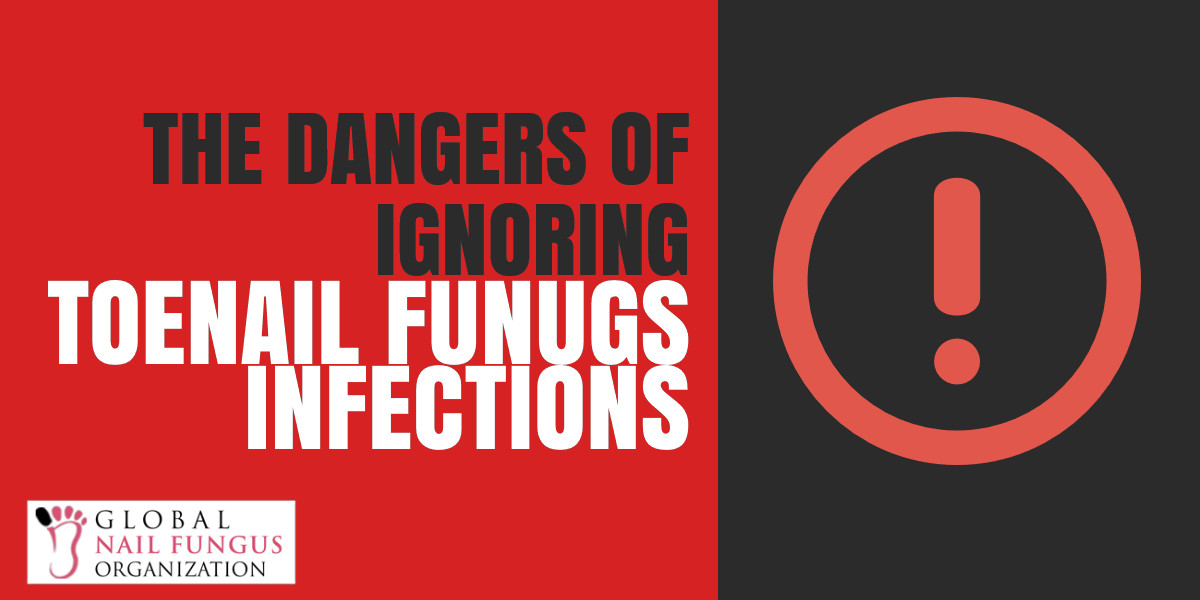 The Dangers of Ignoring Toenail Fungus Infections
The Dangers of Ignoring Toenail Fungus Infections
Table of Contents
Experiencing Nail Fungus In Its Early Stages
Fungal nail infections are becoming a common nail problem, especially if you frequent public bathrooms, gym, saunas, or spas. People often dismiss nail fungus because it generally does not give any discomfort and the first signs are often hard to detect. Brown or black spots and white streaks may signify an infection in your nail. It may later on progress to more evident changes wherein the nail thickens or have a rougher surface. Although not bothersome, leaving a fungal nail infection untreated can make it harder and more frustrating to cure in the end.
Total dystrophic onychomycosis, or severe nail fungal infections, is the end-stage of this nail disease. Fungus has started to infect larger portions of the nail causing it to become deformed, brittle, and weak. More often than not, it starts to become painful and even emit some type of foul odor. There is increased possibility for permanent damage to the nail. The infection may also spread to other parts of your body and create more serious illnesses.
Complications from Severe Nail Fungal Infections
Inevitably, dismissing a nail problem can lead to more serious effects to our health. There are several complications that arise when nail fungal infections are left untreated.
Foot Pain and Discomfort
Generally, nail fungus is painless which can lead it to being ignored and left untreated. Nail fungal infections make the nails thickened and deformed. Initially, they might not seem worrying, but ignoring a nail fungus can become painful overtime. The pain begins when the thickening of the nail causes a hindrance when wearing certain footwear. There might be difficulty in walking, and change in footwear may be deemed necessary.
Nail Fungus May Spread to the Skin and Other Nails
Nail fungal infections are highly contagious, and it is possible that they may spread to other healthy nails surrounding it. Fungus does not only infect nails. It may also result to the contamination of the foot’s skin. This condition is more commonly known as athlete’s foot and it makes the skin on your feet red, itchy, and cracked. People who wear heavy footwear and sweaty socks all day are more susceptible to the spread of nail fungal infections to the other areas of the feet.
Nail Fungus Can Cause Other Forms of Body Infections
Other body infections are a huge risk when a nail fungal infection is ignored. As mentioned, nail fungal infections may contaminate the surrounding skin. When the skin becomes cracked and open, bacteria can easily enter and create a widespread infection all over your body.
A simple fungal nail infection can lead to cellulitis. This condition produces swollen, red, tender skin and demands immediate treatment with antibiotics. Severe cellulitis can also enter the bloodstream and become life-threatening.
Loss of Nails
The growth of fungus causes the separation of the nail from its nail bed. In the late stages of a nail fungal infection, the nails become thick, hard, weak, and brittle. This makes it easier for the nail to crack, chip, and break. If you continually dismiss this, the cracking can lead to severe nail damage and loss of your nails. In some occasions, the loss of nail can be permanent.
Special Groups At Risk for Complications In Severe Onychomycosis
Delaying the treatment of a nail fungus until its late stages can be excruciatingly challenging. For some people with other diseases/conditions, avoiding the onset of severe onychomycosis is essential. The dangers that involve the end-stage nail disease can lead to an even more harmful situation for them.
Diabetes
Studies have shown that 22% of patients with diabetes develop toenail onychomycosis. Diabetes can lead to neuropathy (nerve loss) and peripheral arterial disease, which increases a diabetic’s susceptibility for fungal nail infections. In addition, the poor wound healing effects of diabetes make treatment more nail fungal infections very difficult.
HIV/AIDS
Fungal infections are opportunistic infections and affect people with weak immune systems. HIV/AIDs is an example of a disease condition that suppresses one’s immunity, putting them at greater risk. For those with HIV/AIDs, treatment should be ensued as early as possible to prevent something serious and life-threatening, like fungal meningitis.
Early Treatment Is Key To Preventing Severe Onychomycosis
Nail fungal infections are best treated in its earliest stages. Once you spot any of the mentioned early signs and symptoms, seek the advice of your health professional. Usually, for early onychomycosis, treatment may simply be in the form of topical anti-fungal solutions. EmoniNail is a perfect example of a topical treatment that contains safe and effective ingredients, such as undecylenic acid and tea tree oil, that will likely kill fungi and improve the nail’s overall health.
Treating onychomycosis in recent times has advanced and the availability of surgical treatments, laser therapies, and other oral anti-fungal medications are now out in the market. Although not necessary in early onychomycosis, they also prove to be successful in eliminating fungal nail infections. These types of treatments are best recommended under the supervision of your doctor. Visit your physicians to know what treatment works best for you.
Conclusion
Nail fungal infections are generally not life-threatening. The early signs and symptoms do not give any type of discomfort, which makes it easy to dismiss. Although it may not seem to be bothersome, leaving nail fungus untreated can lead to serious complications. Foot and nail pain, spread of fungal infection to surrounding nails and skin, risk for other body infections, and permanent nail loss are few things that one should be concerned of when a nail fungus becomes severe. Diabetics and HIV/AIDs patients are more at risk when complications of nail fungus happen. They may lead to even more serious conditions.
Nail fungus should be treated as soon as early signs and symptoms are present. Currently, topical anti-fungal solutions, like EmoniNail, prove to be effective in killing fungus and improving the nail’s overall health. Other treatment options are also possible. Consulting a physician is best to know what treatment suits your condition because combating nail fungus isn’t the same for everyone.






